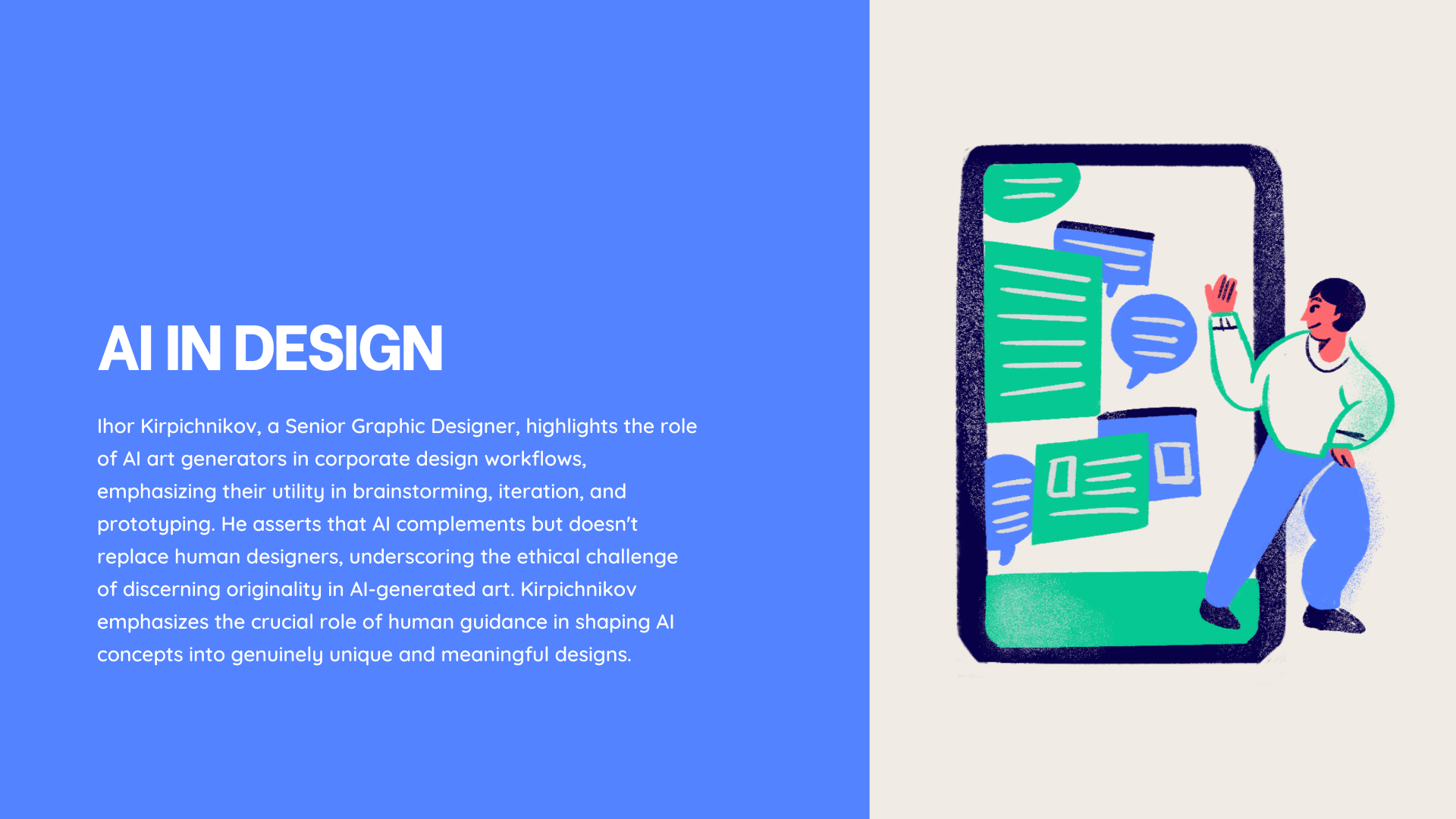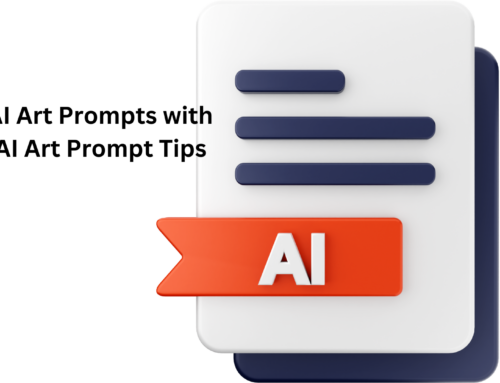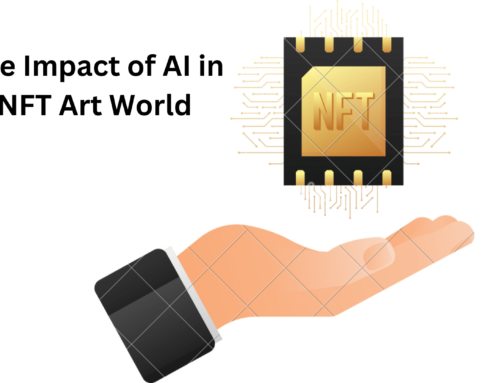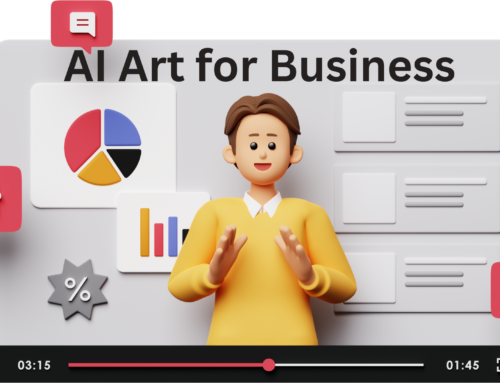Ever thought about how your favorite apps and websites are made? It’s all thanks to design workflows – the way designers bring ideas to life on our screens. Let’s take a closer look at how these workflows work and why they’re so important in creating digital stuff.
The impact of AI art generators on design workflows has revolutionized this process, In the past, designers used to start with sketches on paper and then move to computers. But now, things have changed a lot! With new technology, designers work together using online tools and software that makes the process faster and smoother.

let’s delve into the three key questions and Ihor Kirpichnikov’s insights
Question 1: How can AI art generators be integrated into existing corporate design workflows?
Ihor Kirpichnikov, a Senior Graphic Designer at Ikagency.com, offers valuable insights into the integration of AI art generators into corporate design workflows. He says “As a professional designer, I’ve seen firsthand how AI art generators can be used in a workflow. Still, it’s important to remember that we are in a yearly stage, and they’re not replacements for human creativity yet. Here’s how I see them fitting in:
1) Brainstorming & Inspiration:
- Explore Concept: The team can generate visual ideas based on keywords or styles. You can explore different directions in seconds.
- Mood Board: Create inspirational mood boards with different aesthetics to show visually how the design “feels” with different colors and shapes.
2) Iteration & Refinement:
- Variation: Teams can use it for multiple iterations of a logo, layout, or product. It will save a lot of time and allow for focused refinement.
- Texture & Pattern: Generate unique textures and patterns for backgrounds, illustrations, or branding elements, adding visual depth and interest.
3) Prototyping & Mockups:
- Prototyping: Create basic mockups for website wireframes, app interfaces, or packaging designs for early feedback and testing. They’ll not be the best ones, but they can still be a guide for further exploration.
- Presentation-Ready Mockups: Generate initial mockups for client presentations, allowing time for more polished versions later.”
Question 2: Can AI-generated art replace the need for human graphic designers, or is it more likely to be a complimentary tool?
Addressing the pivotal question of whether AI can replace human graphic designers, Ihor Kirpichnikov provides his seasoned perspective. “AI art generators are great tools for creating loads of design ideas fast, but they don’t really get the deeper meaning of a brand or its goals. Think of it as your creative partner who needs a bit of guidance.
They can throw out tons of ideas, but it’s up to you, with your vision and know-how, to shape those ideas into designs that truly connect with people and tell the brand’s story the right way. You’re the one who makes the designs meaningful and effective, not the AI.”
Now, let’s turn our attention to the insights of Taylor Scher, SEO Consultant at TaylorScherSEO. “In my opinion, it’s going to be more of a complimentary tool. I think it has some opportunity for creating really unique images, but I think human designers are still needed to provide an additional human touch on it. As an example, I asked Dall-E to create an image of a stressed Startup founder transcending into the astral plane from all his stress. It’s so random and dumb, but AI generated it perfectly.”
Question 3: What are the ethical considerations regarding using AI-generated art, especially in terms of originality and ownership?
Considering the ethical dimension of using AI-generated art, Ihor Kirpichnikov sheds light on the challenge of distinguishing between genuinely new creations and clever copies of existing designs. “AI art remixes what’s already out there, making it challenging to tell if something’s brand new or just a clever copy of an existing design. We must admit that most designers do this.
That’s where the human touch comes in. With AI artwork, designers act as guides, taking those initial AI sparks and shaping them into genuinely original work, not simply accepting them as they are. It’s like taking a palette of pre-mixed paints and using your artistic vision to create something entirely new.”
Unraveling the Impact of AI Art Generators on Design Workflows
In the midjourney of our exploration into the impact of AI art generators on design workflows, let’s zoom in on the nifty ways they refine the creative process. Imagine having a design buddy named DALL-E, your very own Artificial Intelligence companion armed with generative AI algorithms. DALL-E isn’t here to take over but to join forces with designers, making the workflow smoother than ever.
As we all know, the design process can sometimes feel like a maze, especially when tackling repetitive tasks. This is where AI tools come to the rescue. They automate those repetitive bits, letting designers focus on the real magic, the creative bits that only a human touch can bring. It’s like having a trusty sidekick, leaving you with more time and brainpower to play with ideas and truly streamline your workflow and content creation. The impact of AI art generators on design workflows is transformative, enhancing collaboration and efficiency in the creative journey.
How does the use of AI impact the speed and efficiency of the design process?
In the world of graphic design, the impact of AI art generators on design workflows is changing how things work, shining a light on how these magical tools influence today’s design workflows. Imagine having a design helper right at your fingertips – that’s what AI in graphic design is like. These image generators aren’t just tools; they’re like magical wands that make the design process faster.
AI is changing how we approach design tasks. Instead of spending hours thinking about design options, AI can generate lots of ideas, giving designers a head start. It’s like having a creative buddy that never runs out of ideas. With image-based AI technology, designers can explore new ideas and play around with different styles easily. The impact of AI art generators on design workflows is clear in how quickly they can create, helping creative industries keep up with the always-changing design needs.
As we move into the future, it’s clear that AI isn’t here to replace human creativity; it’s here to make it better. AI as a tool isn’t just about making the design process faster; it’s about opening up new possibilities and creating opportunities for future jobs in the creative field. So, let’s welcome the change, because AI isn’t just a tool; it’s a creative companion reshaping how we think, create, and bring designs to life.
How do AI art generators impact design workflows in the creative industry?
In the vibrant world of design, the impact of AI art generators on design workflows is truly remarkable. These smart tools, known as AI art generators, play a crucial role in enhancing the creative aspects of design work. They bring a fresh perspective to the aspect of design, pushing the boundaries of what can be achieved and allowing designers to focus more on the creative aspects of their work.
One significant way AI art generators contribute is by boosting efficiency within the design team. Designers can rely on AI to generate multiple design options, especially in certain design tasks such as logo design. This not only speeds up the design process but also opens up new possibilities for exploring various creative avenues. The role of AI in a design agency or the design industry at large becomes evident as it transforms routine tasks, allowing the design team to allocate more time to the creative aspects of their work.
The transformative power of generative AI models is becoming increasingly apparent in the evolving landscape of design trends. Artists are using AI to stay ahead of the curve and experiment with novel ideas. AI can be used to generate unique design elements, adding a touch of innovation to the traditional design process. As we witness the potential of AI being harnessed in the design industry, it becomes clear that the creative synergy between human designers and AI art generators is shaping the future of design in exciting ways.

The Customizable Design Elements of Airbrush AI
In the dynamic world of design, Airbrush AI emerges as a groundbreaking text-to-image generator tool, revolutionizing the creative landscape for designers. This innovative tool seamlessly integrates into design workflows, offering a host of features that enhance efficiency and creativity.
Key Features of Airbrush AI:
- Effortless Image Generation: Airbrush AI simplifies the image creation process by effortlessly converting text into visually stunning images.
- Customizable Design Elements: Designers can personalize and tailor the generated images by adjusting various design elements, ensuring a unique and tailored output.
- Time-Efficient Workflow: The tool significantly speeds up design workflows, allowing designers to focus more on refining their creative concepts rather than spending excessive time on image creation.
- Versatile Application: Airbrush AI can be applied across diverse design projects, from social media graphics to marketing materials, providing versatility in its creative application.
- User-Friendly Interface: With an intuitive and user-friendly interface, designers of all levels can easily navigate and utilize the tool without a steep learning curve, making it accessible for beginners and experienced professionals alike.
Airbrush AI’s integration into design workflows marks a significant stride in the symbiotic relationship between AI and design, offering a powerful tool that empowers designers to bring their creative visions to life effortlessly.
Concluding the Masterpiece of Design Innovation
In conclusion, the impact of AI art generators on design workflows is undeniable, setting the stage for a future where AI-powered design becomes the standard. By wholeheartedly embracing AI, designers can unlock a plethora of possibilities, broadening their creative horizons and boosting efficiency in design processes. The capacity of AI to generate design options based on the analysis of design principles not only streamlines workflows but also opens up novel avenues for innovative solutions.
Looking forward to the future, The impact of AI art generators on design workflows, it is apparent that industries like advertising are already reaping the benefits of AI-powered design solutions. Unlike traditional image editing tools, AI can analyze and comprehend design requirements, offering tailored solutions that align with the ever-evolving needs of the design world. Whether AI is utilized for a specific AI project or becomes a routine part of the design toolkit, its significance cannot be overstated. In the dynamic realm of AI, we continue to witness how AI is proving to be a game-changer, reshaping the design landscape and propelling us towards a future where the creative possibilities are truly limitless.








Leave A Comment